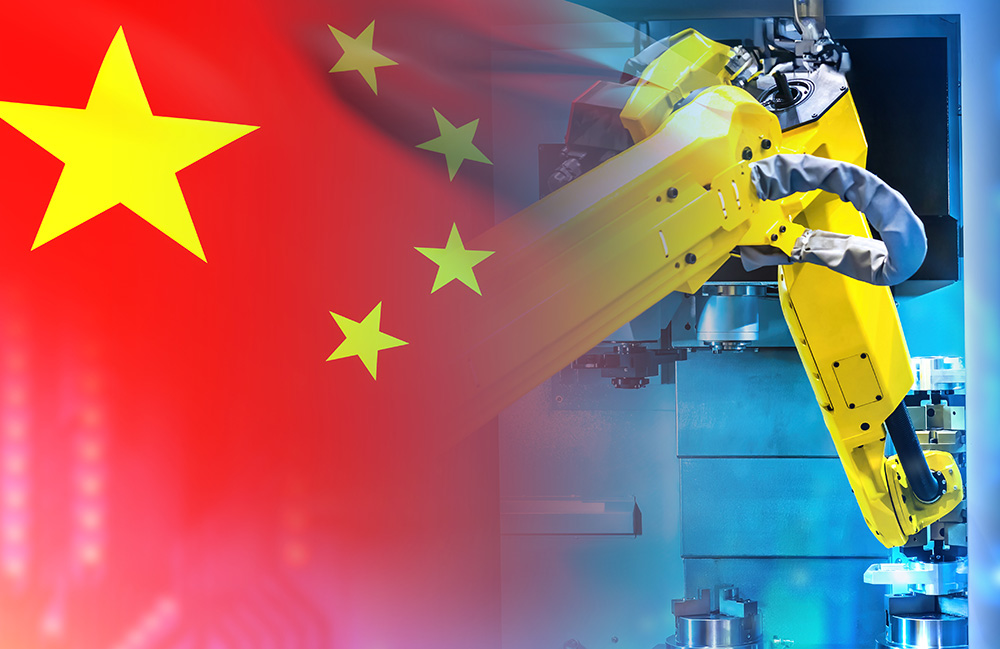
In 2023, China surpassed Germany and Japan in robot density, with 470 robots per 10,000 employees, according to the International Federation of Robotics. | Source: Adobe Stock
The U.S. is falling behind in its efforts to reshore manufacturing, and one of the biggest obstacles is hiding in plain sight: a shortage of mechanical engineers. While China graduates more than 350,000 mechanical engineers each year, the U.S. produces fewer than 45,000. That’s not just a gap in numbers—it’s a structural disadvantage that could limit our ability to scale industrial innovation. And that doesn’t even include other essential fields of engineering like industrial, controls, and manufacturing, which are just as critical to the future of U.S. manufacturing.
I’ve worked in robotics and automation for more than 20 years, across national research labs, startups, and open-source initiatives. In every context, the equation has remained the same: You need people and tools, skilled engineers to design and integrate solutions, and automation that allows small teams to scale their impact.
If we’re serious about bringing manufacturing back to the U.S., we can’t focus on policy alone. We need a national strategy that invests in both STEM education and practical, scalable robotics automation.
Gap in engineers undermines reshoring from China
Mechanical engineers are foundational to manufacturing. They design the systems, troubleshoot the integration, and connect software to physical execution. But as education costs rise and public perception of manufacturing remains outdated, fewer students are pursuing engineering careers. And too few understand the impact these roles have on global competitiveness.
Meanwhile, other countries are taking a long view. China’s investment in engineering education spans universities, trade schools, and government-backed apprenticeships. That kind of national pipeline builds industrial capacity that scales.
In the U.S., we need a similar strategy. That means early STEM engagement, more accessible engineering degrees, and programs that highlight what modern manufacturing actually looks like—automated, precise, and increasingly software-defined.
Robots won’t replace people—they’ll help us scale
Automation isn’t about replacing jobs. It’s about enabling engineers and technicians to accomplish more with less. This is especially true for small and midsize manufacturers, which often lack the resources to build large teams or deploy cutting-edge systems on their own.
Throughout my career, I’ve seen how the right automation platform can multiply the output of a single engineer. But I’ve also seen how inaccessible those tools can be. Smaller manufacturers are often left out of the automation conversation—not because the need isn’t there, but because the cost, complexity, and technical requirements are still too high.
That’s one of the reasons I helped launch ROS-Industrial over a decade ago—to make robotics more open, modular, and scalable. But open-source only goes so far without education, training, and support. We need policies that address all three.
Why now?
Despite years of reshoring rhetoric, trade policy alone hasn’t delivered a meaningful revival. Factory output has remained uneven, supply chains are still vulnerable, and many small and midsize producers lack the workforce and technology to scale. Meanwhile, global competitors have invested aggressively in automation, infrastructure, and technical education—building not just capacity, but resilience.
At the same time, the U.S. has fallen behind in preparing for the realities of a new labor economy. Automation is no longer a future concept—it’s a present-day requirement. Yet adoption remains fragmented, and upskilling efforts haven’t kept pace with industry needs.
If we don’t act now—while reshoring momentum is real and bipartisan support exists—we risk missing a narrow window of opportunity. Other nations such as China are already building the systems and workforce to dominate the next era of industrial innovation. This isn’t just about jobs. It’s about maintaining strategic capacity, accelerating productivity, and securing long-term economic resilience.
Invest in both people and tools
The future of American manufacturing depends on two things: people and the tools that empower them. That means rethinking how we fund STEM education, expanding access to engineering careers, and making automation practical for the manufacturers who need it most.
Reshoring won’t succeed if we treat education, workforce development, and robotics as separate conversations. They’re deeply interconnected. We need mechanical engineers to design the systems, and we need automation to help them scale. Without both, we’ll continue to fall short of our industrial goals.
 About the author
About the author
Shaun Edwards is the co-founder and chief technology officer of Plus One Robotics, a venture-backed startup deploying robotics in logistics and e-commerce. He shapes the company’s technical vision, product roadmap, and software architecture.
Previously, Edwards was a principal engineer at Southwest Research Institute (SWRI), where he led research and development and deployed automation across industries like aerospace, food, and logistics. Shaun also founded the ROS-Industrial open-source project, now a global initiative supported by major robotics companies. He holds an M.S. in mechanical engineering from Case Western Reserve University.
The post America can’t out-innovate China without mechanical engineers — or robots appeared first on The Robot Report.


